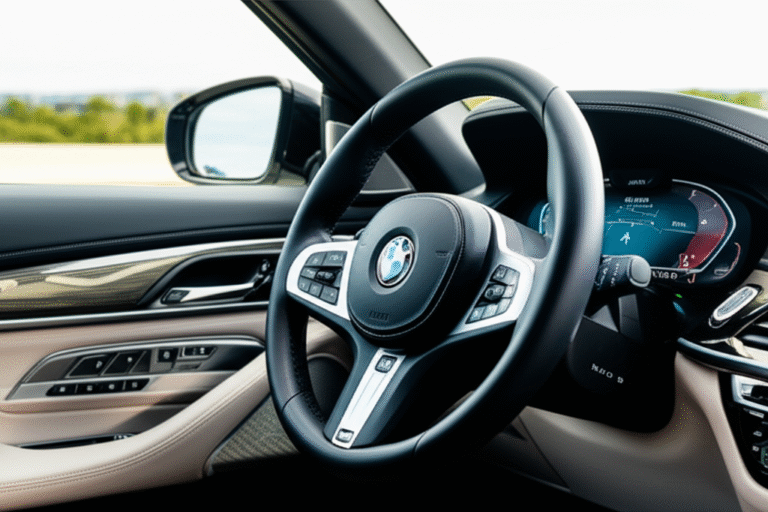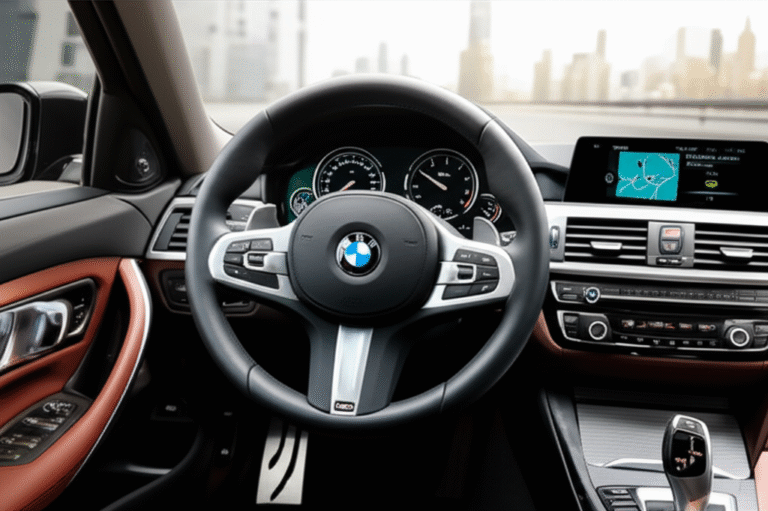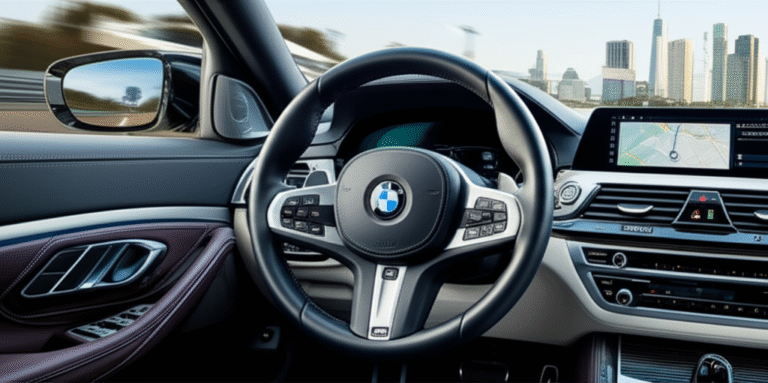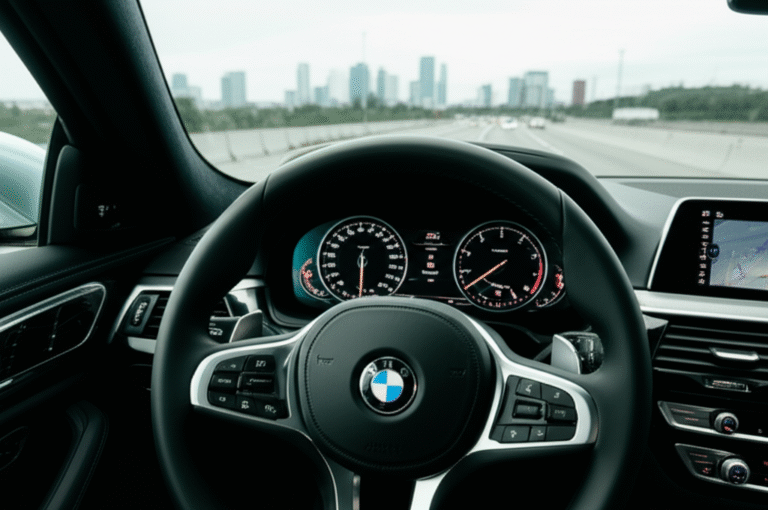BMW X1 Tyre Pressure: 5 Critical Tips
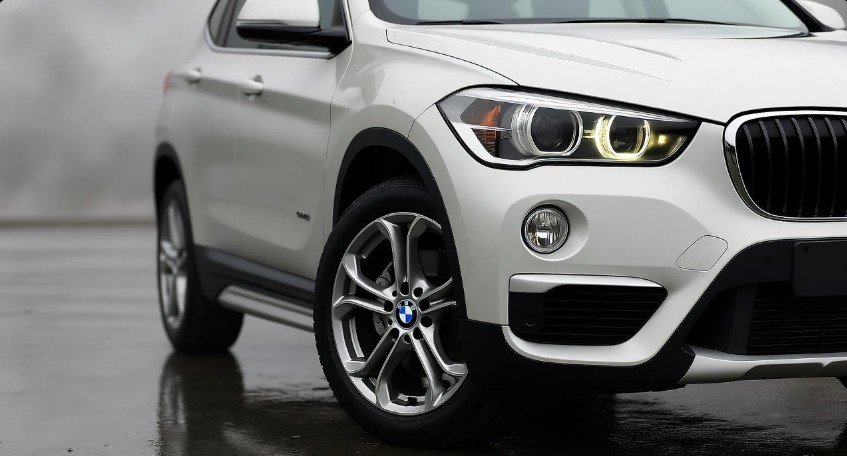
BMW X1 tyre pressure is crucial for safety and efficiency. Maintaining proper inflation ensures optimal handling, fuel economy, and tyre longevity for your luxury SAV. Follow these 5 critical tips to keep your BMW X1 performing at its best.
Key Takeaways
- Inflate tyres to recommended BMW X1 pressure.
- Check tyre pressure regularly, especially in varying temperatures.
- Inspect tyres for wear and damage during inflation.
- Understand the impact of tyre pressure on driving.
- Utilize the TPMS for continuous monitoring.
Driving a BMW X1 is an experience of refined luxury and dynamic performance. To ensure every drive remains as thrilling and safe as the first, paying attention to the details is key. One of the most vital yet often overlooked aspects of car maintenance is tyre pressure. Incorrect tyre pressure in your BMW X1 can negatively impact everything from fuel efficiency to handling, and even tyre lifespan. It might seem like a small detail, but it has a significant effect on your driving experience. This guide will break down everything you need to know about BMW X1 tyre pressure, offering five critical tips to keep you rolling smoothly and safely across the USA.
Why BMW X1 Tyre Pressure Matters

Your BMW X1’s tyres are the only point of contact between your vehicle and the road. As such, their condition and inflation level are paramount. Proper tyre pressure ensures that the tyre’s contact patch with the road surface is optimized, allowing for effective braking, precise steering, and balanced traction. When your BMW X1’s tyre pressure is too low, the sidewalls flex excessively, generating heat and increasing the risk of a blowout. This also leads to reduced fuel economy as the engine has to work harder to overcome increased rolling resistance. Conversely, over-inflated tyres have a smaller contact patch, leading to reduced grip, uneven tread wear, and a harsher ride. For a vehicle that embodies precision engineering like the BMW X1, maintaining the correct tyre pressure is not just about comfort; it’s about upholding the intended driving dynamics and safety standards.
The Tire Pressure Monitoring System (TPMS) in your BMW X1 is a sophisticated electronic system designed to alert you when tyre pressure drops below a safe level. However, it’s important to understand that the TPMS typically triggers a warning at a specific, lower threshold and is not a substitute for regular manual checks. Relying solely on the TPMS can mean you’re driving with suboptimal pressure for extended periods before a warning illuminates. Understanding the recommended tyre pressure for your specific BMW X1 model and checking it manually is a proactive step towards ensuring your SAV performs at its peak under all driving conditions.
Tip 1: Locate and Understand Your BMW X1’s Recommended Tyre Pressure
The first and most crucial step in managing your BMW X1’s tyre pressure is knowing what it should be. BMW, like all automakers, specifies recommended tyre pressures based on extensive testing for each model and even different trim levels and tyre sizes. These recommendations are designed to provide the best balance of ride comfort, handling, fuel efficiency, and tyre wear for your specific vehicle.
Where to Find Your BMW X1 Tyre Pressure Information
You won’t find the recommended tyre pressure on the tyre itself. That number on the tyre’s sidewall is the maximum pressure the tyre can safely hold, not the recommended operating pressure for your vehicle. Instead, you’ll find the correct information in a few key locations:
- Driver’s Doorjamb Sticker: The most common and accessible location is a sticker on the driver’s side doorjamb. Open your driver’s door, and look for a label typically found on the frame of the door opening. This sticker will list the recommended cold tyre pressures for both the front and rear tyres, often with different values for normal and fully loaded driving conditions.
- Owner’s Manual: Your BMW X1 owner’s manual is a comprehensive guide to your vehicle. It will contain a section detailing tyre specifications, including the recommended pressures. Keep this manual in your glove compartment for easy reference.
- Fuel Filler Door: On some BMW models, you might find a sticker with tyre pressure information inside the fuel filler flap. Check this area if you can’t locate it on the doorjamb.
Understanding the Pressure Units and Load Conditions
Tyre pressure is typically measured in pounds per square inch (PSI). The sticker or manual will specify the PSI for both front and rear tyres. You might also see different recommendations for “normal load” and “full load” or “high speed.”
- Normal Load: This is the pressure generally recommended for everyday driving with one or two occupants and moderate luggage.
- Full Load: If you’re carrying a heavier load, such as multiple passengers and substantial luggage, you’ll typically need to increase the tyre pressure slightly as indicated. This helps the tyres maintain their shape and support the increased weight.
It’s essential to use the recommended cold tyre pressure. ‘Cold’ means the car has been stationary for at least three hours, or driven for less than a mile at moderate speed. Driving heats up tyres, increasing the internal pressure, so checking them when they are cold provides the most accurate reading.
| Tyre Position | Normal Load (PSI) | Full Load (PSI) |
|---|---|---|
| Front | 32 | 35 |
| Rear | 38 | 40 |
| *Note: Always refer to your specific BMW X1 model’s doorjamb sticker or owner’s manual for exact specifications. Values above are illustrative. | ||
Always consult your vehicle’s specific documentation for the most accurate information. Using the correct pressure ensures your BMW X1 handles as the engineers intended.
Tip 2: How to Check and Adjust Your BMW X1 Tyre Pressure
Now that you know the recommended pressure, it’s time to learn how to check it and make adjustments. This is a straightforward process that doesn’t require any special automotive expertise.
Tools You’ll Need
- Tyre Pressure Gauge: This is the most important tool. You can find digital or analog gauges. Digital gauges are often easier to read, while analog gauges are typically more durable. Invest in a good quality gauge for accurate readings. You can purchase one at any auto parts store or even many large retail stores.
- Air Compressor (Optional but Recommended): While you can visit a petrol station with an air pump, having your own portable air compressor or a pump at a local service station makes the process much more convenient. Some high-quality tyre gauges have a built-in inflator.
Step-by-Step Guide to Checking Tyre Pressure
- Ensure Tyres are Cold: As mentioned, always check tyre pressure when the vehicle has been parked for at least three hours, or driven a very short distance.
- Locate the Valve Stem: Each tyre has a small black or metal cap covering the valve stem. Unscrew this cap by twisting it counter-clockwise. Keep the caps in a safe place, like your pocket, so you don’t lose them.
- Attach the Tyre Pressure Gauge: Firmly press the gauge onto the valve stem. You might hear a slight hiss of air; this is normal, but try to minimize it by creating a good seal.
- Read the Pressure:
- Digital Gauge: The digital display will show the pressure reading.
- Analog Gauge: A small needle or bar will indicate the pressure on a dial.
The reading shown is the current pressure in your tyre.
- Compare to Recommended Pressure: Compare the reading from your gauge to the recommended pressure found on your BMW X1’s doorjamb sticker or in the owner’s manual.
Adjusting Tyre Pressure
- If Pressure is Too Low: Connect an air compressor to the valve stem. Add air in short bursts, re-checking the pressure with your gauge every few seconds. Do not over-inflate.
- If Pressure is Too High: Most tyre pressure gauges have a small button or nub that allows you to release air. Press this gently against the valve stem to let out small amounts of air, then re-check the pressure until it matches the recommended PSI.
Once the tyre is at the correct pressure, screw the valve stem cap back on tightly. Repeat this process for all four tyres, and don’t forget to check your spare tyre if your BMW X1 is equipped with one.
Pro Tip: Keep a small notebook or use your phone’s notes app to record the date and tyre pressures you check. This can help you identify any tires that consistently lose air faster than others, indicating a potential leak.
Tip 3: The Importance of Regular Checks and Temperature Fluctuations
Tyre pressure isn’t a “set it and forget it” maintenance item. It changes naturally over time and is significantly affected by ambient temperature. Making regular checks a habit is essential for maintaining safety and performance.
How Often Should You Check?
A good rule of thumb is to check your BMW X1’s tyre pressure at least once a month. However, more frequent checks are beneficial, especially if you:
- Drive frequently: The more miles you clock, the more wear and tear your tyres experience, and the more likely pressure changes.
- Experience significant temperature changes: This is a critical factor, especially across the diverse climate zones in the USA.
- Notice a change in ride quality: If your car feels bouncier, less responsive, or the steering feels off, check your tyre pressure immediately.
Temperature’s Impact on Tyre Pressure
For every 10-degree Fahrenheit (about 5.6-degree Celsius) drop in ambient temperature, tyre pressure can decrease by approximately 1 PSI. Conversely, as temperatures rise, so does tyre pressure. This is due to the basic physics of gases: warmer air expands, and cooler air contracts.
Consider the following scenarios common in the USA:
- Seasonal Changes: Driving into winter? Your tyre pressure will likely drop. A cold morning in Denver can significantly affect tyre pressure compared to a warm afternoon. If you live in a region with extreme temperature swings, like the Northeast or Midwest, you’ll need to adjust more frequently.
- Daytime vs. Nighttime: Even within a single day, a significant difference in temperature can occur, especially in desert regions or during transitional seasons. A tyre checked in the hot afternoon sun might be several PSI higher than when checked the next morning.
- Driving in Different Altitudes: Altitude also plays a role, with lower atmospheric pressure at higher altitudes potentially affecting readings, though the effect is less pronounced than direct temperature changes for tyre pressure.
What Does This Mean for Your BMW X1?
If you set your tyre pressure on a warm day and then experience a cold snap, your tyre pressure will drop. If it drops below the recommended level, you risk under-inflation issues. Conversely, checking your tyres on a freezing morning and inflating them to the recommended PSI means they might become over-inflated when the temperature rises. Therefore, it’s crucial to check and adjust your tyre pressure in the prevailing conditions you’ll be driving in.
For example, if you’re preparing for a road trip from Chicago to Florida, ensure your tyres are properly inflated for the temperatures you’ll encounter on the road, not just for your starting point. You can find helpful resources on the National Highway Traffic Safety Administration (NHTSA) website regarding tyre safety and maintenance, including the importance of proper inflation.
Tip 4: Inspecting Your Tyres During Pressure Checks
While you’re checking and adjusting the air pressure in your BMW X1’s tyres, take a few extra moments to give them a visual inspection. This is a golden opportunity to catch potential problems before they become serious issues, saving you from unexpected roadside trouble and expensive repairs.
What to Look For
During each tyre pressure check, perform a quick visual inspection of each tyre:
- Tread Depth: The tread on your tyres is what provides grip. Check for wear indicators (small raised bars in the grooves). If the tread is worn down to the level of these indicators, it’s time for new tyres. You can also use the “penny test”: place a penny head-down into the deepest part of the tread. If you can see the top of Lincoln’s head, your tread depth is dangerously low. Proper tread depth is crucial for wet-weather traction, braking performance, and overall safety, especially for a performance-oriented vehicle like the BMW X1.
- Uneven Wear Patterns: Look for signs of wear on only one side of the tread (inner or outer edge), or wear in the centre.
- Edge Wear: Often indicates under-inflation.
- Centre Wear: Usually a sign of over-inflation.
- Feathering/Scalloping: Can point to alignment issues.
Uneven wear can affect handling and indicates that something needs to be addressed, whether it’s tyre pressure, alignment, or suspension.
- Cuts, Cracks, and Bumps: Inspect the sidewalls and tread surface for any visible cuts, cracks, bulges, blisters, or foreign objects (like nails or screws). These are serious signs of potential tyre failure and require immediate attention. A bulge in the sidewall means the internal structure of the tyre has been compromised and it could blow out at any moment.
- Valve Stems: Check the valve stems for any cracks or signs of deterioration. If a valve stem is leaking air, it will need to be replaced.
The Consequences of Neglecting Tyre Condition
Driving on worn or damaged tyres is not only dangerous but also negates the premium driving experience your BMW X1 is designed to provide. Poor tread depth dramatically increases your stopping distance, especially in wet conditions. Uneven wear can lead to instability and unpredictable handling. And the risk of a sudden tyre failure (a blowout) is significantly higher with cuts, cracks, or bulges, which can cause a loss of vehicle control. According to the National Highway Traffic Safety Administration (NHTSA), tyre issues, including under-inflation and wear, are a contributing factor in many vehicle crashes.
Incorporating a quick tyre inspection into your routine tyre pressure checks is a simple yet highly effective way to ensure your BMW X1 remains safe and performs optimally. It’s a small investment of time that can prevent significant problems down the road.
Tip 5: Understanding the BMW X1 TPMS and What to Do When It Lights Up
Your BMW X1 is equipped with a sophisticated Tyre Pressure Monitoring System (TPMS). This system is designed to alert you to a potentially dangerous condition of low tyre pressure. While it’s a valuable safety feature, it’s important to understand its limitations and what to do when the warning light appears.
How TPMS Works
Most modern BMW X1 models use direct TPMS. This system uses sensors mounted inside each wheel that continuously measure the air pressure and temperature within the tyre. These readings are transmitted wirelessly to the vehicle’s control unit. If the pressure in any tyre falls significantly below the recommended level (or a preset low threshold), the TPMS warning light will illuminate on your dashboard. The light typically looks like a flat tyre with an exclamation mark inside.
Interpreting the TPMS Warning Light
When the TPMS warning light comes on, it means one or more of your tyres are significantly under-inflated. This requires immediate attention. Do not ignore it.
- Reduce Speed and Find a Safe Place: If the light illuminates while you’re driving, reduce your speed and find the nearest safe location to pull over.
- Check Your Tyres: Once safely stopped, visually inspect your tyres. Is one obviously flat or very low?
- Use Your Tyre Pressure Gauge: The safest course of action is to use your tyre pressure gauge to check the pressure of all four tyres. Compare these readings to your vehicle’s recommended pressure.
- Inflate or Add Air: If you find low tyres, inflate them to the correct recommended pressure. If you have a portable compressor, you can do this on the spot. Otherwise, drive slowly to the nearest service station or tyre shop to add air.
- Resetting the TPMS: In most BMW X1 models, the TPMS will automatically reset after you’ve corrected the tyre pressure and driven a short distance (usually a few miles) at speeds above 20 mph. Some older models might require a manual reset procedure, which can typically be found in your owner’s manual or accessed through the vehicle’s iDrive system.
When the TPMS Light Stays On or Flashes
- Solid Light: A continuously illuminated TPMS light usually indicates one or more tyres are significantly under-inflated.
- Flashing Light: A flashing TPMS light can indicate a more serious issue, such as a malfunction in the TPMS system itself or a very rapid loss of tyre pressure. If the light flashes for about 60-90 seconds when you start the car and then stays solid, it suggests a system fault. If it flashes during driving and stays on, it indicates a problem. In this case, it’s best to have your vehicle inspected by a qualified technician.
TPMS and Spare Tyres
It’s important to note that if your BMW X1 has a temporary spare tyre (donut spare) and it doesn’t have a TPMS sensor, the TPMS light will stay on while the spare is in use. This is normal, as the system cannot detect pressure in the spare. Always ensure your spare tyre is properly inflated according to its own specifications (often found on the spare tyre itself or in the owner’s manual) and that you have it serviced or replaced with a full-size tyre as soon as possible.
Regular manual checks are still crucial even with TPMS. TPMS is a warning system, not a replacement for diligent maintenance. Ensuring your tyres are correctly inflated at all times is the best way to leverage the advanced technology in your BMW X1 and ensure your safety.
Frequently Asked Questions (FAQ) About BMW X1 Tyre Pressure
Here are some common questions beginner drivers often have about their BMW X1’s tyre pressure:
Q1: How often should I check the tyre pressure on my BMW X1?
A1: It’s recommended to check your BMW X1’s tyre pressure at least once a month, and before any long trips. Also, re-check if you notice any significant changes in ambient temperature.
Q2: Can I just use the pressure listed on the tyre sidewall?
A2: No. The pressure on the tyre sidewall is the maximum pressure the tyre can safely hold, not the recommended operating pressure for your BMW X1. Always use the pressure specified on your vehicle’s doorjamb sticker or in the owner’s manual.
Q3: My TPMS light came on, but the tyre doesn’t look flat. What should I do?
A3: Even if a tyre doesn’t look obviously flat, the TPMS light indicates it’s significantly under-inflated. Use a tyre pressure gauge to check all tyres and add air as needed. The light should turn off after driving a short distance.
Q4: Does tyre pressure affect fuel economy on my BMW X1?
A4: Yes, absolutely. Under-inflated tyres create more rolling resistance, forcing your engine to work harder and consume more fuel. Maintaining correct tyre pressure can significantly improve your BMW X1’s fuel efficiency.
Q5: Can I put nitrogen in my BMW X1 tyres instead of air?
A5: Yes, you can use nitrogen. Nitrogen is more stable than regular air, meaning it’s less affected by temperature changes and leaks out slower. However, it’s not strictly necessary for most drivers, and you can still use compressed air from any service station. If you do use nitrogen, ensure it’s pure or that any air added is also nitrogen to maintain consistency.
Q6: My BMW X1 has different pressure recommendations for front and rear tyres. Why is that?
A6: The different pressures are usually due to the weight distribution of the vehicle. The engine is typically in the front, making the front tyres carry more weight. The rear tyre pressure is often set to provide optimal stability and handling characteristics, especially when the vehicle is loaded.
Q7: Is it safe to drive my BMW X1 if one tyre has a different pressure than the others, even if the TPMS light isn’t on?
A7: It’s not ideal. While the TPMS might not yet be triggered, uneven tyre pressure can affect your vehicle’s handling, braking, and tyre wear. It’s best to keep all tyres inflated to their recommended pressures for optimal performance and safety.
Conclusion
Maintaining the correct tyre pressure in your BMW X1 is a simple yet profoundly important aspect of car ownership. It directly influences your vehicle’s safety, handling, fuel efficiency, and the lifespan of your tyres. By understanding where to find your recommended pressures, knowing how to check and adjust them, being mindful of temperature fluctuations, inspecting your tyres regularly, and properly responding to your TPMS, you are actively contributing to a safer and more enjoyable driving experience. Treat your BMW X1 with the care it deserves, starting with its tyres, and it will reward you with performance and reliability mile after mile.


